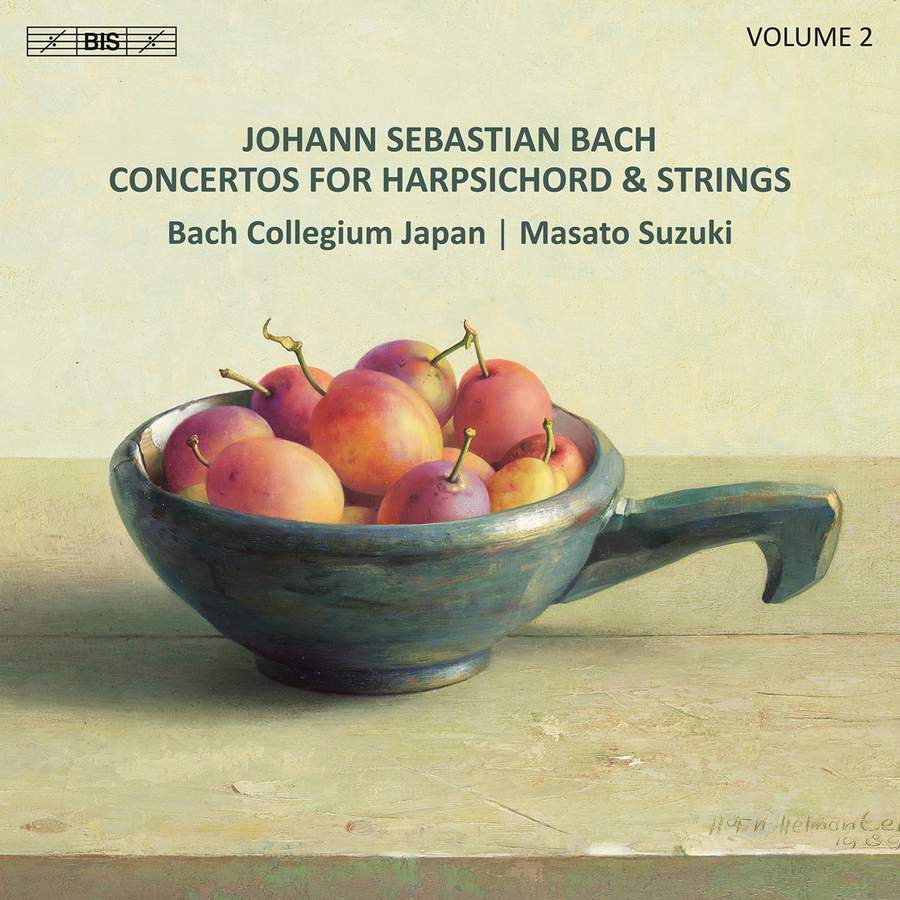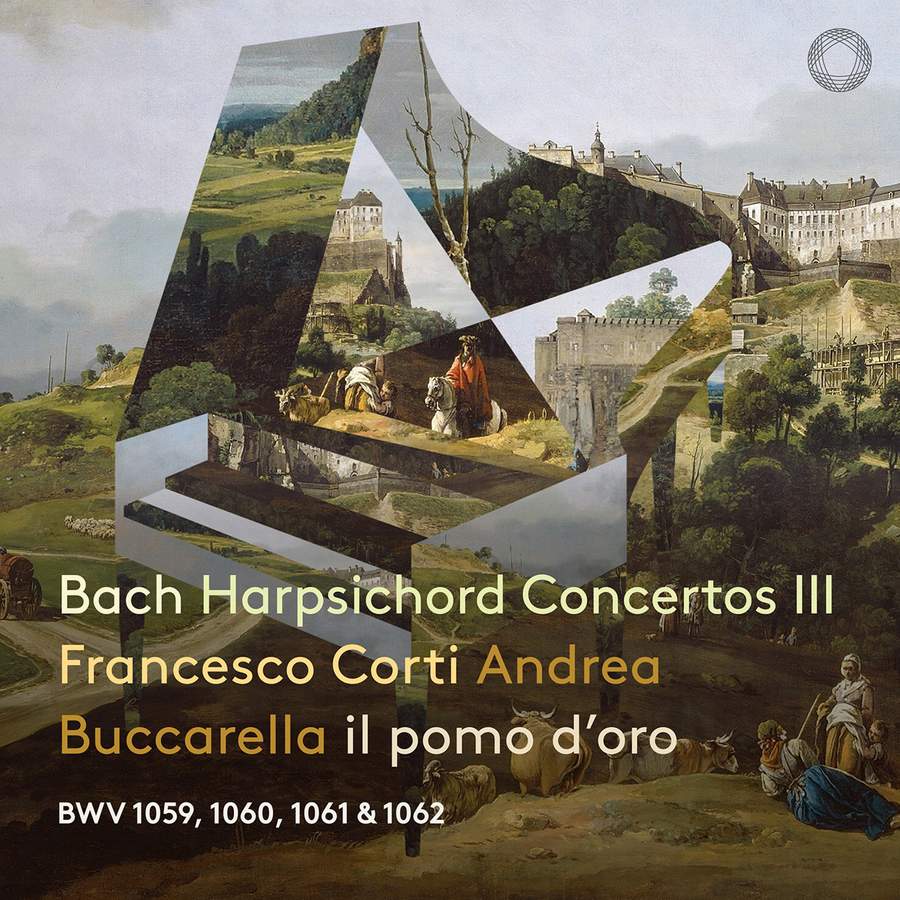JS BACH Harpsichord Concertos (Corti; Suzuki)
View record and artist detailsRecord and Artist Details
Genre:
Orchestral
Label: BIS
Magazine Review Date: 10/2022
Media Format: Super Audio CD
Media Runtime: 60
Mastering:
DDD
Catalogue Number: BIS2481

Tracks:
| Composition | Artist Credit |
|---|---|
| Concerto for Harpsichord and Strings |
Johann Sebastian Bach, Composer
Bach Collegium Japan Masato Suzuki, Harpsichord |
Genre:
Orchestral
Label: Pentatone
Magazine Review Date: 10/2022
Media Format: CD or Download
Media Runtime: 56
Mastering:
DDD
Catalogue Number: PTC5186 966

Tracks:
| Composition | Artist Credit |
|---|---|
| Concerto for 2 Keyboards |
Johann Sebastian Bach, Composer
Andrea Buccarella, Harpsichord Francesco Corti, Harpsichord Il Pomo d'Oro |
| Concerto for Harpsichord and Strings |
Johann Sebastian Bach, Composer
Emmanuel Laporte, Oboe Francesco Corti, Harpsichord Il Pomo d'Oro |
Author: Lindsay Kemp
Having completed distinctive and imaginative recordings of Bach’s seven solo harpsichord concertos and Triple Concerto (7/20, 4/21), Francesco Corti moves on to the three concertos for two harpsichords. Of these, BWV1062 is better known in its original guise as the Double Violin Concerto, BWV1060 is better known in its popular putative reconstruction as a concerto for oboe and violin, and BWV1061 – the only one to have been specifically composed for harpsichords – simply deserves to be better known.
Corti is joined on ‘Harpsichord 2’ by Andrea Buccarella, and a fine 20 fingers they make. Other than in places in BWV1060, Bach makes few distinctions between the parts, and with both players using copies by the same maker of the same 1738 Christian Vater instrument, there is no audible way of knowing who is who unless you happen to be following the score. So enjoyable is the music-making, however, that you’ll soon want to stop doing that and just listen. BWV1062 is fast and busy, making no attempt to imitate the lyricism of violins but pressing on and letting the transparent textures – the ever-vibrant Il Pomo d’Oro are here single strings – speak for themselves. Terse string chords in the finale will make you think of CPE Bach. By contrast, BWV1060 opens at a steadier speed than you might expect, its pulse a gentle squeeze. It’s a pity that the string halo that accompanies the soloists in the slow movement at 3'09" is almost inaudible, but the finale is a clamorous, brilliant finish, full of bubbling keyboard figuration (dare I say faster than an oboe might comfortably go?) and eager tutti responses. BWV1061, in which the string parts are so subservient as to be barely necessary, is a real celebration of keyboard brilliance and gets an exuberant outing, full of joyful drive in the fast movements and good honest expressive rubato in the slower.
As a bonus, Corti fashions his own ‘creative reconstruction’ of a concerto for harpsichord, oboe and strings, BWV1059, which Bach began to copy out but left off after nine bars, enough to show that it was going to be based on the opening movement for organ and orchestra of Cantata No 35. The remaining movements Corti adapts from later numbers in that work: a siciliana-like aria (the oboe takes the singer’s line), and a second orchestral movement with organ. He says he had to thin out the notes in places and invent new ones in others, mainly for reasons of balance and tone sustenance, but no one who has heard his recent richly inventive Handel Suites (Arcana, 5/22) would be surprised to learn that he manages these textures with convincing ease.
Masato Suzuki recorded the Bach doubles with his father Masaaki and the Bach Collegium Japan in 2013 (8/14), but it is only recently that he has turned to the solo concertos, of which this is the second volume of two. As with Corti, this has single strings, though the closer recording makes for a more intimate and friendly encounter with the wood, gut and wire, as well as a sense that any individual instrument can momentarily be a soloist, such as the violin in the outer movements of BWV1055 or the cello in BWV1057. Suzuki’s harpsichord, a copy of a French instrument, has a slenderer tone than the Vaters, and the string sound is more relaxed and springy than Il Pomo d’Oro’s. Generally, these are steady and conventional readings, the most striking interpretational moments being the jabbed short notes in the big bass motto themes in the slow movements of BWV1054 and 1058 (which I suspect not everyone will enjoy). There is great clarity and air, however, as well as a pleasing sense of a harpsichordist treating them as elegant accompanied harpsichord pieces, that puts me in mind of the Leonhardt recordings of the early 1970s.
Explore the world’s largest classical music catalogue on Apple Music Classical.
Included with an Apple Music subscription. Download now.

Gramophone Digital Club
- Digital Edition
- Digital Archive
- Reviews Database
- Events & Offers
From £9.20 / month
Subscribe
Gramophone Club
- Print Edition
- Digital Edition
- Digital Archive
- Reviews Database
- Events & Offers
From £11.45 / month
Subscribe
If you are a library, university or other organisation that would be interested in an institutional subscription to Gramophone please click here for further information.






